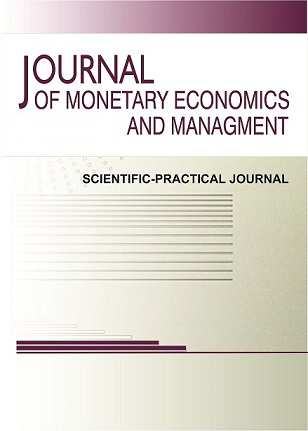student
employee
The objective of this study is to conduct an institutional analysis of Uzbekistan’s domestic natural gas market in the context of reforms undertaken between 2015 and 2024, with a focus on structural constraints undermining its economic efficiency. The paper introduces the concept of a semi-structured market—an institutional configuration combining centralized control with elements of simulated competition. Based on statistical and comparative analysis, the study examines the outcomes of formal restructuring, partial digitalization of gas metering, and efforts toward tariff liberalization. The findings show that continued vertical integration, limited technological coverage, and rigid price regulation generate persistent institutional barriers to competition, investment, and modernization. The scientific novelty lies in the development of an analytical framework for assessing energy markets in transitional economies through the lens of institutional semi-structuration. The practical relevance is reflected in a set of phased policy recommendations, including functional separation, targeted subsidies, and private capital attraction, informed by international best practices.
natural gas, Uzbekistan, institutional economics, semi-structured market, restructuring, tariff regulation, digitalization, subsidies, monopoly, energy market, reforms, market-based pricing, infrastructure, institutional barriers
1. Asian Development Bank. Energy Sector Assessment: Uzbekistan. — Manila: Asian Development Bank, 2020. — 68 s/
2. CEIC Data. Uzbekistan Natural Gas Statistics [Elektronnyy resurs]. — Rezhim dostupa: https://www.ceicdata.com/en/uzbekistan/natural-gas (data obrascheniya: 3 maya 2025 goda).
3. Gosudarstvennyy komitet Respubliki Uzbekistan po statistike. Energeticheskiy sektor. — Tashkent: Goskomstat, 2024. — 64 s.
4. Ministerstvo energetiki Respubliki Uzbekistan. Ob'yavlena sebestoimost' elektroenergii i prirodnogo gaza [Elektronnyy resurs]. — Rezhim dostupa: https://kun.uz/ru/news/2023/09/21/obyavlena-sebestoimost-elektroenergii-i-prirodnogo-gaza (data obrascheniya: 8 maya 2025 goda).
5. Gazeta.uz. Uzbekistan prevratilsya v netto-importera gaza. Kak tak poluchilos'? [Elektronnyy resurs]. — Rezhim dostupa: https://www.gazeta.uz/ru/2024/01/25/gas-importer/ (data obrascheniya: 8 maya 2025 goda).
6. Kun.uz. Uzbekistan v 2023 godu vydelil bolee 14 trln sumov na subsidii na gaz i elektrichestvo [Elektronnyy resurs]. — Rezhim dostupa: https://kun.uz/ru/news/2024/01/30/gaz-i-energiya-subsidii (data obrascheniya: 8 maya 2025 goda).
7. Zhang D., Broadstock D. Efficiency and reform in China's energy sector: A DEA approach // Energy Economics. — 2019. — T. 80. — S. 682–695. DOI:https://doi.org/10.1016/j.eneco.2019.01.005.
8. North D.C. Institutions, Institutional Change and Economic Performance. — Cambridge: Cambridge University Press, 1990. — 152 s.
9. Williamson O.E. The Economic Institutions of Capitalism: Firms, Markets, Relational Contracting. — New York: Free Press, 1985. — 450 stranic.
10. Helm D. Energy, the State, and the Market: British Energy Policy since 1979. — Oxford: Oxford University Press, 2003. — 436 s.









